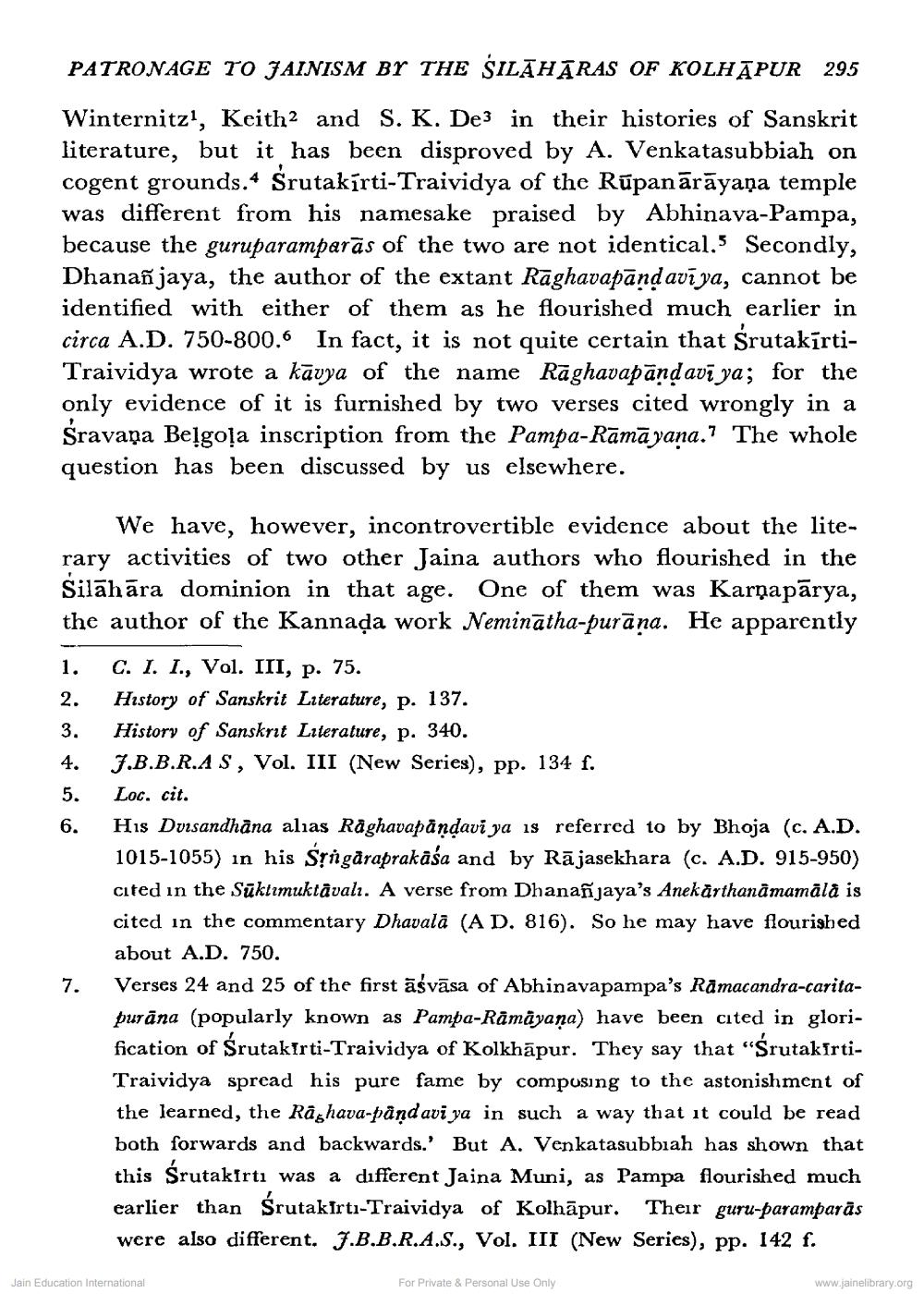________________
PATRONAGE TO JAINISM BY THE SILĀHĀRAS OF KOLHAPUR 295
Winternitz, Keith2 and S. K. De3 in their histories of Sanskrit literature, but it has been disproved by A. Venkatasubbiah on cogent grounds.4 Srutakírti-Traividya of the Rūpanārāyaṇa temple was different from his namesake praised by Abhinava-Pampa, because the guruparamparās of the two are not identical.5 Secondly, Dhanañ jaya, the author of the extant Rāghavapānd avī ya, cannot be identified with either of them as he flourished much earlier in circa A.D. 750-800.6 In fact, it is not quite certain that SrutakīrtiTraividya wrote a kāvya of the name Rāghavapāndavī ya; for the only evidence of it is furnished by two verses cited wrongly in a Sravana Beļgoļa inscription from the Pampa-Rāmāyana.? The whole question has been discussed by us elsewhere.
We have, however, incontrovertible evidence about the literary activities of two other Jaina authors who flourished in the Silāhāra dominion in that age. One of them was Karṇapārya, the author of the Kannada work Neminātha-purāņa. He apparently 1. C. I. I., Vol. III, p. 75.
History of Sanskrit Literature, p. 137.
History of Sanskrit Literature, p. 340. 4. J.B.B.R.AS, Vol. III (New Series), pp. 134 f.
Loc. cit. His Dvisandhāna alias Raghavapāndavi ya is referred to by Bhoja (c. A.D. 1015-1055) in his Srigåraprakāśa and by Rājasekhara (c. A.D. 915-950) cited in the Sūktimuktavali. A verse from Dhananjaya's Anekārthanāmamāla is cited in the commentary Dhavalā (AD. 816). So he may have flourished
about A.D. 750. 7. Verses 24 and 25 of the first āsvāsa of Abhinavapampa's Ramacandra-carita
purāna (popularly known as Pampa-Rāmāyana) have been cited in glorification of Srutakirti-Traividya of Kolkhāpur. They say that "SrutakIrtiTraividya spread his pure fame by composing to the astonishment of the learned, the Raghava-pånd avi ya in such a way that it could be read both forwards and backwards.' But A. Venkatasubbiah has shown that this Srutakirti was a different Jaina Muni, as Pampa flourished much earlier than ŚrutakIrtı-Traividya of Kolhāpur. Their guru-paramparās were also different. J.B.B.R.A.S., Vol. III (New Series), pp. 142 f.
Jain Education International
For Private & Personal Use Only
www.jainelibrary.org




